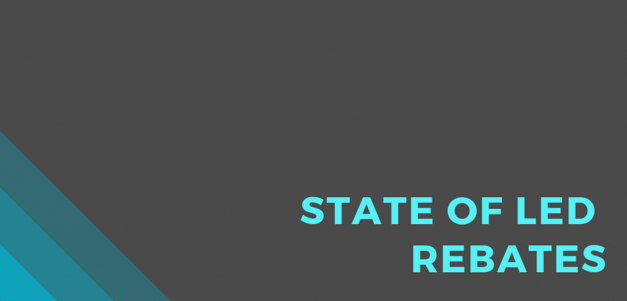
“Aren’t LED rebates going away soon?” is a question we hear ALL THE TIME. People cite a number of different points when making this claim, but two of the most common are energy efficiency policy making rebates unnecessary and anecdotes of specific programs getting rid of LED rebates. Policy does have an impact. Some programs are shifting away from LEDs. But that does not mean the rebates are going away! Let’s take a look and see what the true impact is.
Government has started to step in, enacting policy that requires a shift to energy efficiency, both in the US and EU. Across the US, many states are setting aggressive goals to reduce energy usage and earlier this month, the EU’s halogen ban went into effect and now halogen bulbs are not able to be imported to the EU or sold (outside of existing stock). But for now, let’s focus on one in particular, EISA 2020.
The Energy Independence and Security Act (EISA) was signed in 2007 to move the United States toward clean energy and energy independence. Part of Phase 2 of EISA was establishing a plan to move toward CFL and LED by 2020, which included a failsafe that set a 45 lm/W standard for bulbs effective January 1, 2020 -- essentially making CFL and LED the standard for light bulbs. When technology becomes standard, rebates are no longer seen as necessary to incentivize adoption and do not help utilities reach their energy savings targets. The major impact that this has on energy efficiency rebates will mostly be felt on the residential side of programs, as bulbs make up the vast majority of residential lighting but only a fraction of non-residential. So, as the door starts to close on residential lighting programs, the door is still wide open for commercial and industrial (C&I). There is still plenty of opportunity to get a rebate for upgrading to LED in 2020 and beyond for C&I customers.
Another factor contributing to the belief that LED rebates are going away is that some programs are indeed getting rid of LED rebates for commercial and industrial programs. Some are speculating that these programs moving away from LED rebates is a sign of things to come, but that is not the case.
Two of the rebate programs that are most commonly mentioned when speculating about the death of LED rebates, Tennessee Valley Authority (TVA) and Kentucky Power, had unique operational issues that resulted in issues with forecasting. These programs moving away from LED rebates is not indicative of a nationwide shift on the horizon.
Other programs are no longer incentivizing LEDs on their own, but requiring that a control system is included when upgrading. This isn’t a sign of utilities moving away from LEDs either, rather it is the utility pushing consumers to greater savings by making controls part of their project.
Utilities have long considered LEDs to be the low-hanging fruit of energy efficiency. Compared to other measures, LEDs are relatively easy to install, easy to understand, and the energy savings are straightforward. LEDs became more ubiquitous in large part, thanks to the promotion of utility programs. However, even with the push from utilities and extensive installations, the LED adoption rates for C&I are still surprisingly low. Exterior leads the way, but that’s just relative to everything else. There is still room to expand and for interior -- we’ve barely even scratched the surface.
Another opportunity that will help prolong C&I rebates for energy-efficient lighting is the expansion of lighting controls, particularly networked lighting controls (NLC). According to a study from the DLC®, NLC adoption offers an additional 47% savings, on average. Adopting LEDs and NLCs at the same time is the ideal solution, both from an energy savings perspective and a cost mitigating perspective. Utilities offering rebates for innovative technology will be a major driver for adoption and the number of utility programs offering rebates for NLCs is increasing every day.
There is still plenty of opportunity for energy savings to come from lighting for C&I customers and utility programs will continue to offer rebates for those projects to encourage installation. So, don’t believe the exaggerated hype about LEDs going away for the C&I industry.
.png?width=500&name=2019%20e%20news%20spotlight%20logo%20(1).png)




